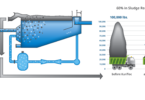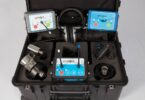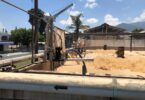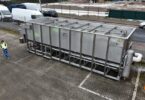
Author: Frank Slovenec, Co-Executive Director, Global Water Works
In June 2022, after over 50 years of research and study, the United States Government Accountability Office (GAO) issued a directive to set a national goal and establish a program to predict, prevent, and remediate toxic Harmful Algae Blooms (HABs). The GAO report emphasizes the need to focus on hypoxia, organic sediment buildup, and the shift to a predominance of undesirable species (HABs) as relevant factors and metrics for preventing and remedying the eutrophic process that leads to HABs. https://www.gao.gov/products/gao-22-104449
Forecasting Hypoxia and HABs RISKS
Phosphorus and nitrogen are nutrients, not toxins, that produce biomass. The issue with eutrophic water bodies is that there is too much invasive weed, algae, and cyanobacteria biomass, and not enough animal biomass in the food web to consume and clear nutrient-rich biomass. Thus, managing eutrophication should be focused on directing nutrients into the production of the right biomass for a healthy, balanced ecosystem that supports natural nutrient processing.

To measure the indicators around oxygenation, modern sonar bathymetry is a fundamental assessment tool used in successful prevention and remediation projects that has not been used by regulatory agencies to date. Bathymetric scanning allows the development of two key metrics after measurement of the depth at which dissolved oxygen levels are low enough to be hypoxic: the volume of water that is hypoxic, and the surface area of sediment that is hypoxic. These two measures provide an effective, relevant way to monitor and compare the risk profile of a lake.
The third key parameter is the extent to which “undesirable species” – cyanobacteria – have managed to exert their dominance. This metric can be determined by taxonomic analysis of water samples taken from a lake by local authorities or citizen scientists. It is essential that residents be trained on the sampling process to accelerate monitoring, speed awareness, and enable early diagnoses.
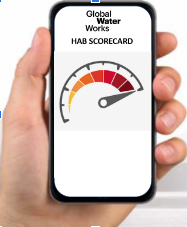
Measurement is the key to management, and the scorecard will provide a mechanism to assess the general health of our lakes. And, where hypoxia or harmful algae are detected, we can implement multi-level methods for efficient nutrient cycling.
GAO Report Conclusions:
The GAO identifies four key shortcomings in managing Hypoxia and HABs to date:
- Reliance on reactive responses after HABs comprised of warnings and publicity about the HAB events and application of algaecides which will kill the algae cells but ultimately exacerbate the problem by feeding the cyanobacteria from infancy to full bloom toxic waste.
- Lack of a program to collect relevant data to inform the prioritization of preventative actions.
- Lack of a national goal for Hypoxia and HAB prevention
- Lack of understanding of the significant reoccurring costs of current reactive responses (mitigation and control) Prevention and remediation prove to be lower in cost.
The GAO report recommends setting a national goal and establishing a national program to prevent toxic HABs.
This 8-minute video summary of the GAO report provides a high-level overview.
Clear Recommendations – The GAO calls for:
- A national goal of prevention
- A national Hypoxia and HABs prevention program
- Performance measurement of the national Hypoxia and HABs prevention program
- Monitoring, forecasting and prioritizing of water bodies for preventive interventions.
- Better information and guidance to state, local and tribal governments on the cost/benefits of prevention over mitigation and control.
GAO Report Online: https://www.gao.gov/products/gao-22-104449
GWW 10-minute Guide: https://youtu.be/f6tNMf8sjgM
*Prevent and Remediate HABs Group: http://bit.ly/GWW-HABS
Read more feature articles on H2O Global News.




